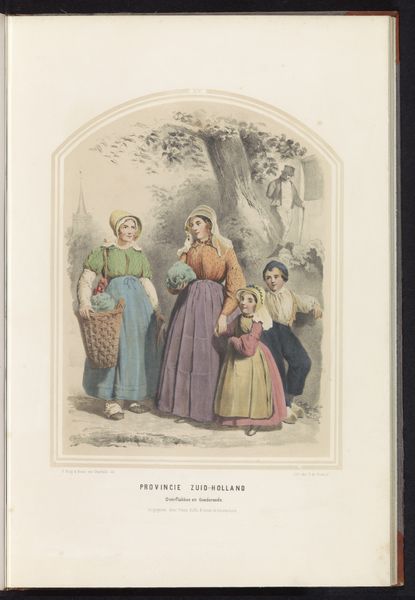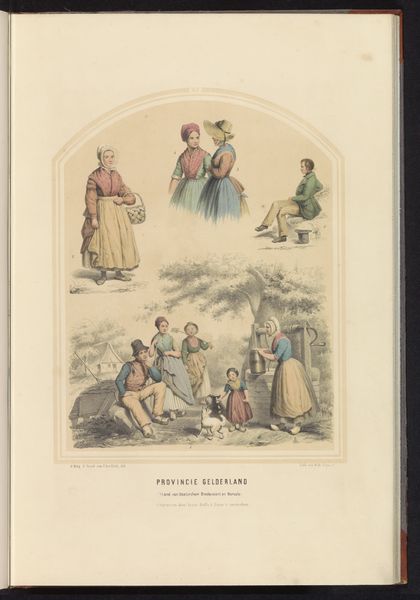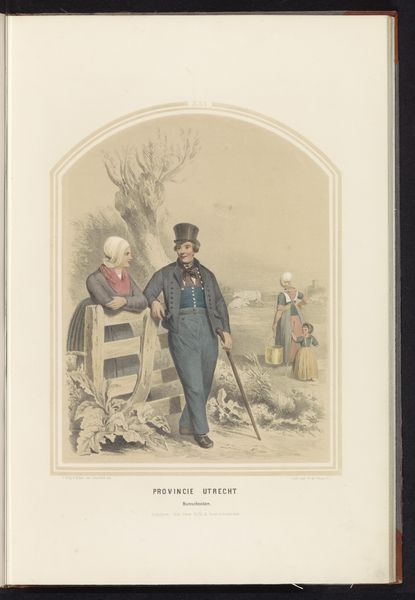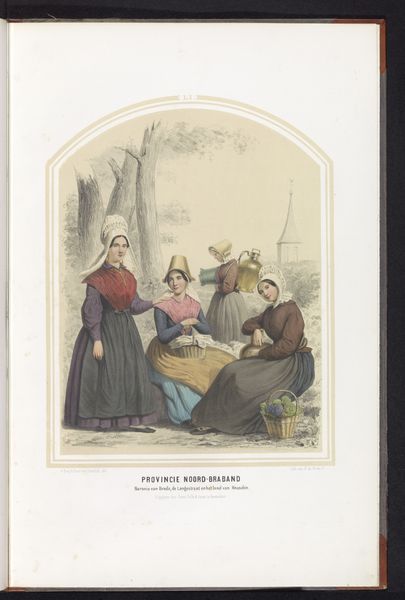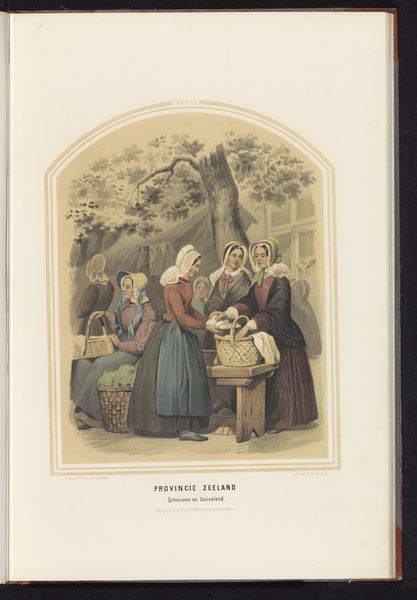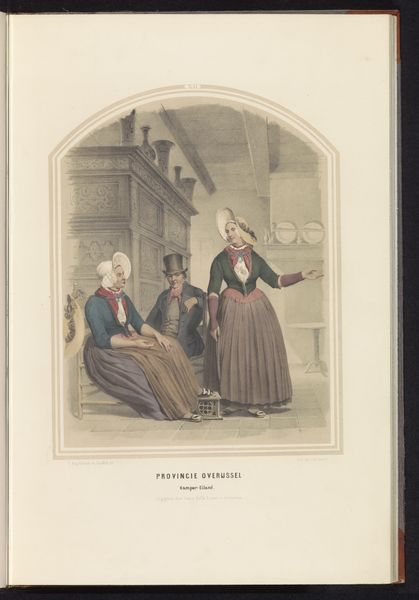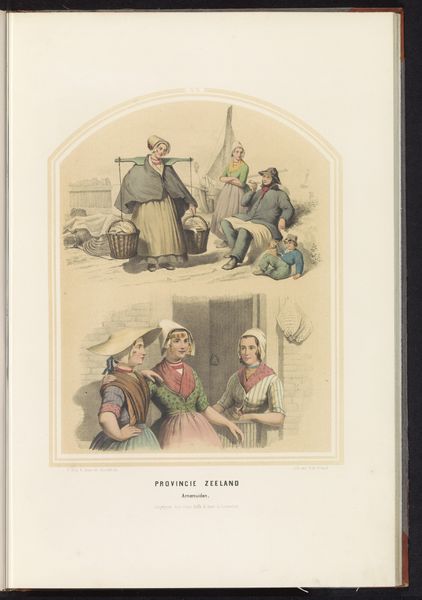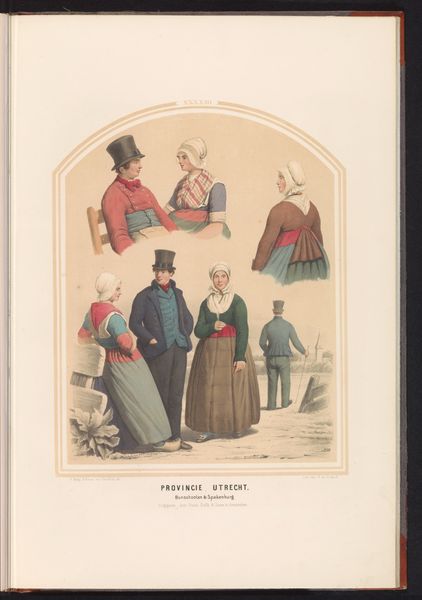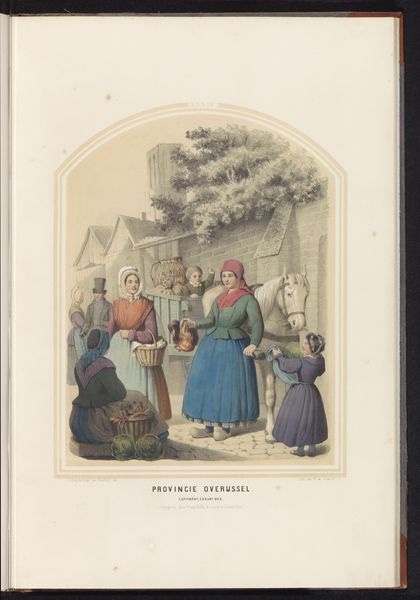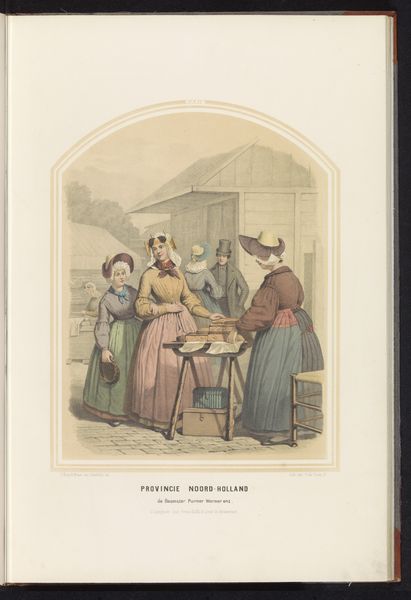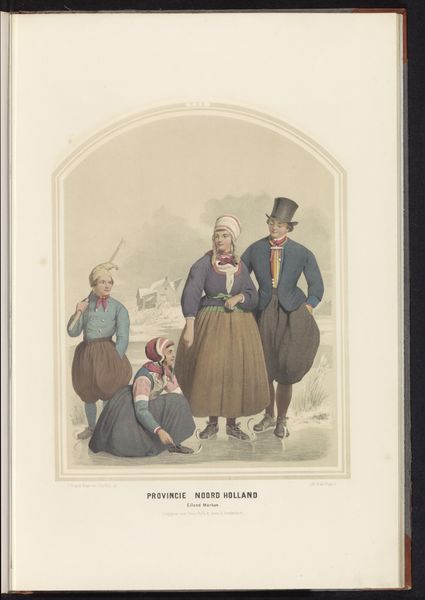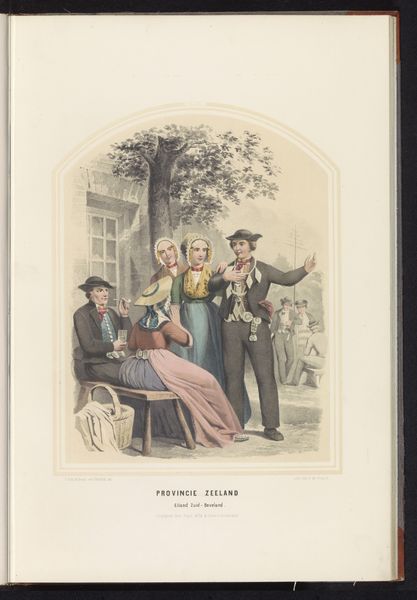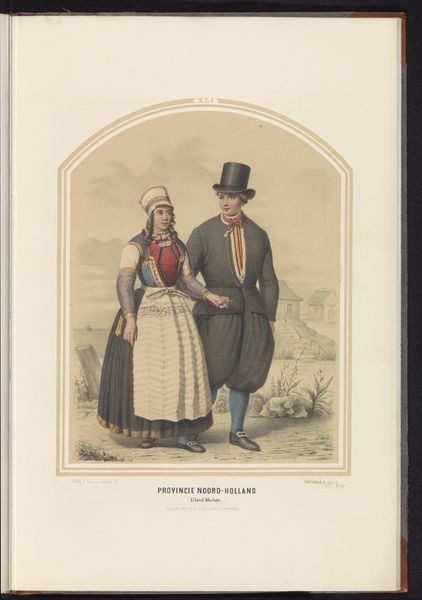
Dimensions: height 523 mm, width 350 mm
Copyright: Rijks Museum: Open Domain
Curator: This is "Klederdracht van Staphorst en Rouveen in Overijssel, 1857", created by Ruurt de Vries, found here at the Rijksmuseum. It appears to be a print made with watercolors. Editor: It's quite charming, in a nostalgic way. There’s a stillness to it, despite the presence of these figures in a seemingly casual scene. The coloring is quite delicate; it almost feels like a tinted photograph, and a little melancholy, too. Curator: Indeed. The clothing immediately strikes me. The details of the costumes—the hats, shawls, and even the way they’re worn— speak volumes about social identity and the preservation of cultural traditions in that area of the Netherlands during this period. Editor: Right, these garments are undoubtedly imbued with complex layers of social meaning, perhaps signaling status, age, or marital standing within the community. But, thinking critically, I’m wondering if it might also romanticize a particular rural identity for an urban audience—a kind of idealized portrait of “simple” folk that overlooks real economic or social struggles? Curator: It's plausible. On one hand, these illustrations document very specific customs and costumes with careful detail, acting as historical records. On the other, the artist chose what to highlight and perhaps even what to omit. Take the baskets of eggs; they feel symbolic of something bigger, almost of agrarian bounty. Editor: I agree. I immediately read those details as visual shorthands—symbols used to present a kind of curated authenticity. It invites reflection on how visual narratives construct perceptions of communities and identities. I am most struck by the woman to the right, gazing and almost daring us to witness them, with such an interesting bonnet. Curator: Looking at the colors themselves, it appears like they follow something like an unwritten, coded formula; a sort of "language of color" operating within the community which creates meaning within this picture and real life. We see continuity of such symbolism present in current traditional clothing around the world. Editor: I think looking closely reveals art history and how people have constructed cultural identity for others as well as themselves. Ultimately this artwork reveals just as much about those being represented and those representing them. Curator: The memory that lives inside an image can continue far into the future. Thank you for your time. Editor: It’s been illuminating!
Comments
No comments
Be the first to comment and join the conversation on the ultimate creative platform.

